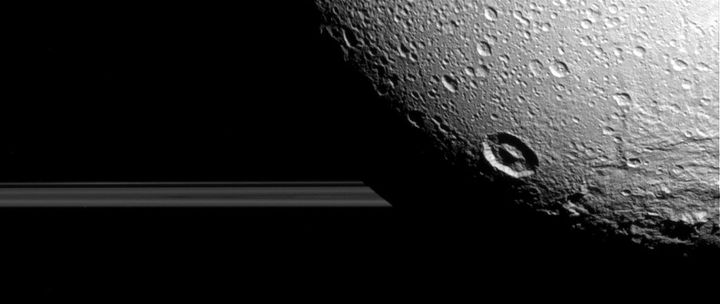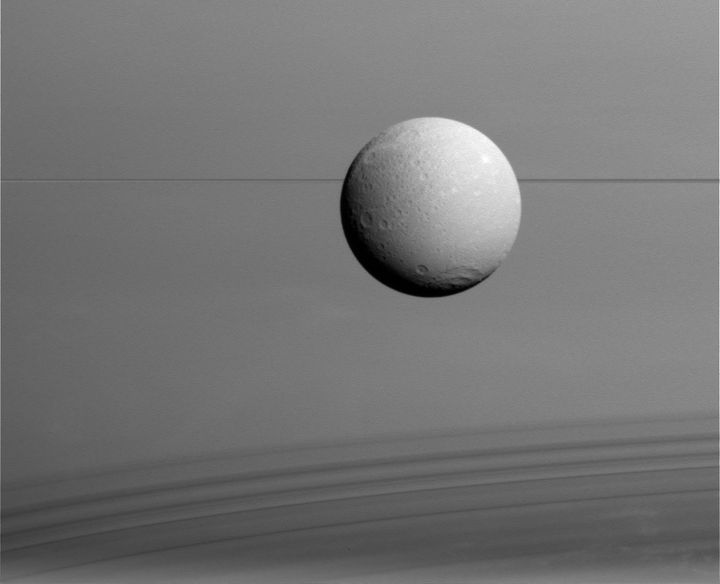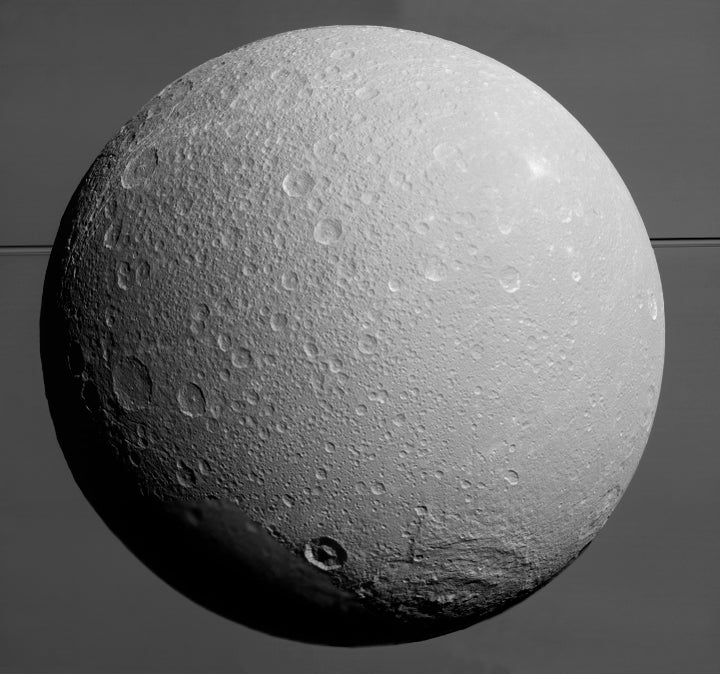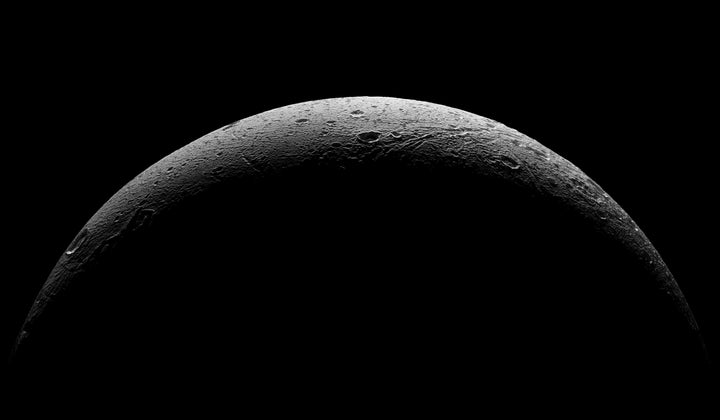
One of the newly released images of Dione, a moon of Saturn, showing the rings of Saturn behind it. The new images were taken earlier this month by the Cassini spacecraft.
If this is goodbye, it's one for the ages.
Cassini, the unmanned spacecraft sent to observe the Saturn system, made its final close flyby of the moon Dione earlier this month and snapped a few parting shots of the icy orb with the planet's rings visible in the background.
Here's one of the images, which almost looks like a pebble skipping out of water:
(Story continues below image.)

Dione, one of the moons of Saturn.
Cassini passed within 295 miles of Dione, one of Saturn's 62 moons, when these images were taken on Aug. 17. The mission is not expected to come close to that moon again.
"I am moved, as I know everyone else is, looking at these exquisite images of Dione's surface and crescent, and knowing that they are the last we will see of this far-off world for a very long time to come," Carolyn Porco, Cassini imaging team lead at the Space Science Institute in Boulder, Colorado, said in a news release. "Right down to the last, Cassini has faithfully delivered another extraordinary set of riches. How lucky we have been."
Here's another look at Dione, with one of the rings of Saturn passing directly behind it:

NASA said the main goal of the flyby was not to snap photos, but to research Dione's gravity.
"We had just enough time to snap a few images, giving us nice, high resolution looks at the surface," Tilmann Denk, a Cassini participating scientist at Freie Universität Berlin, said in a news release. "We were able to make use of reflected sunlight from Saturn as an additional light source, which revealed details in the shadows of some of the images."
Here's Dione shown as a crescent moon:

The full set of images from the flyby have been posted online.
Saturn has so many moons that nine of them haven't even been named yet. In October, Cassini will come within 30 miles of the surface of the moon Enceladus. At one point, it will pass through the moon's icy spray, collecting data that NASA expects will help scientists understand what's going on beneath the surface.
Cassini will also pass smaller moons such as Daphnis, Telesto, Epimetheus and Aegaeon.
Before Cassini's mission comes to an end in late 2017, the spacecraft -- a joint project between NASA, the European Space Agency and the Italian Space Agency -- will repeatedly dive between Saturn and its rings, NASA said.
Also on HuffPost:

